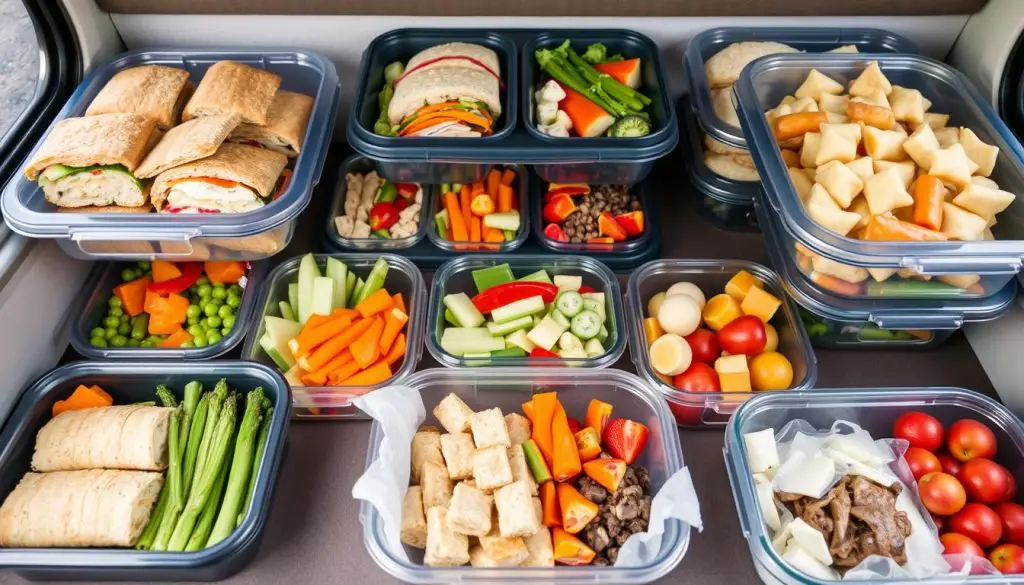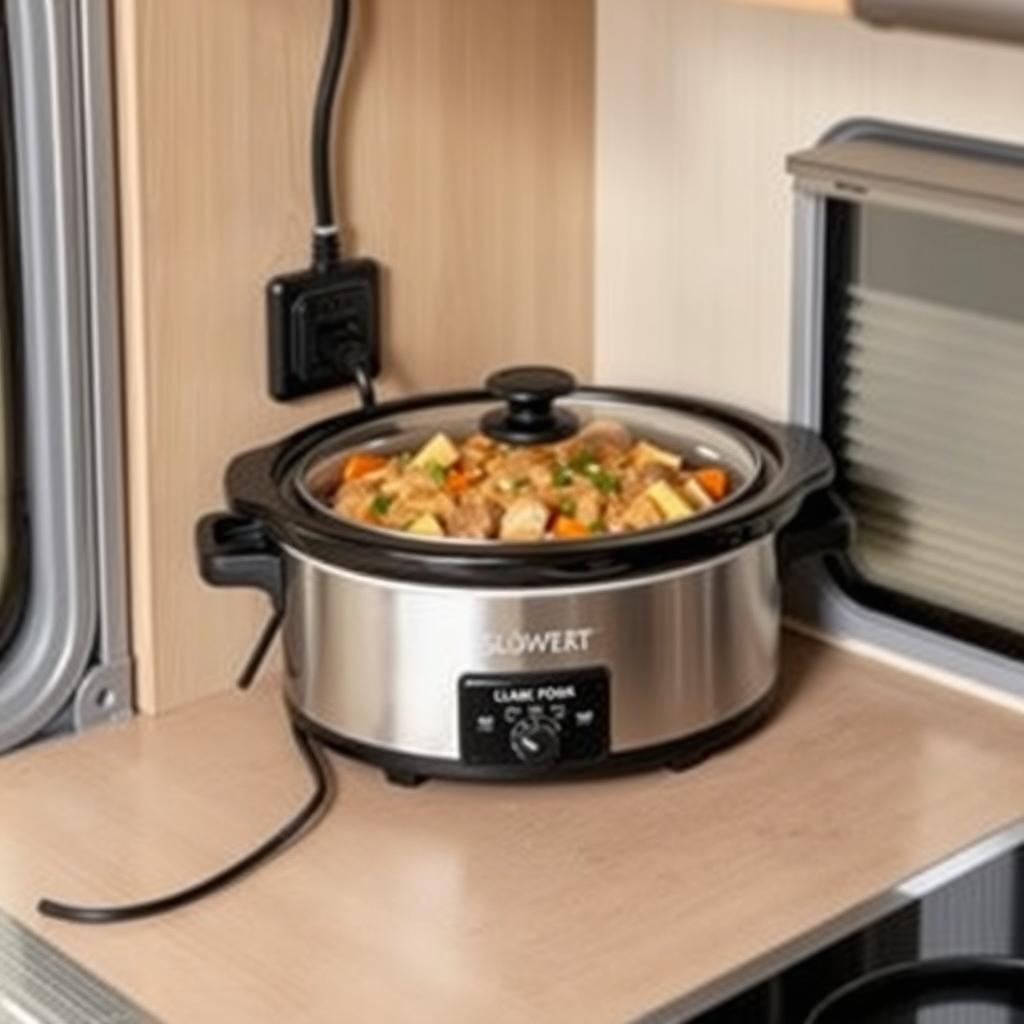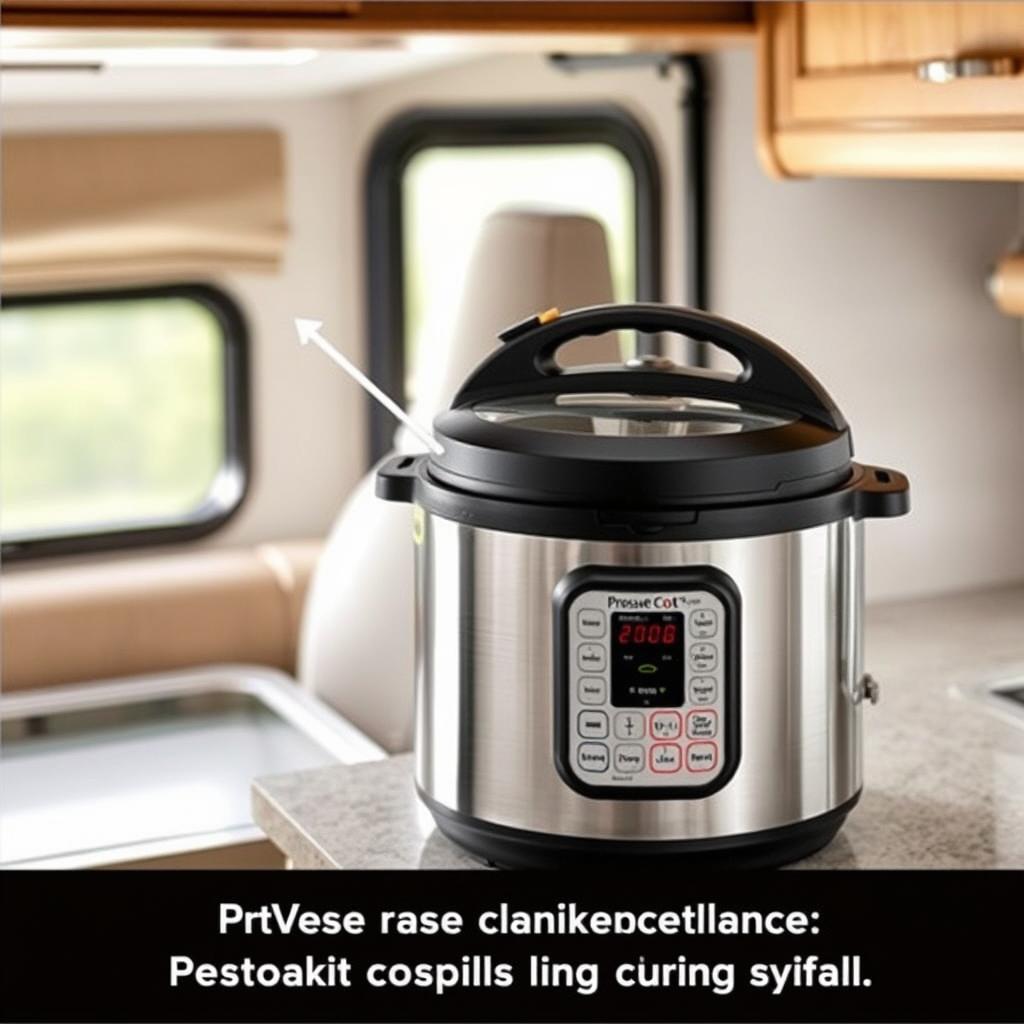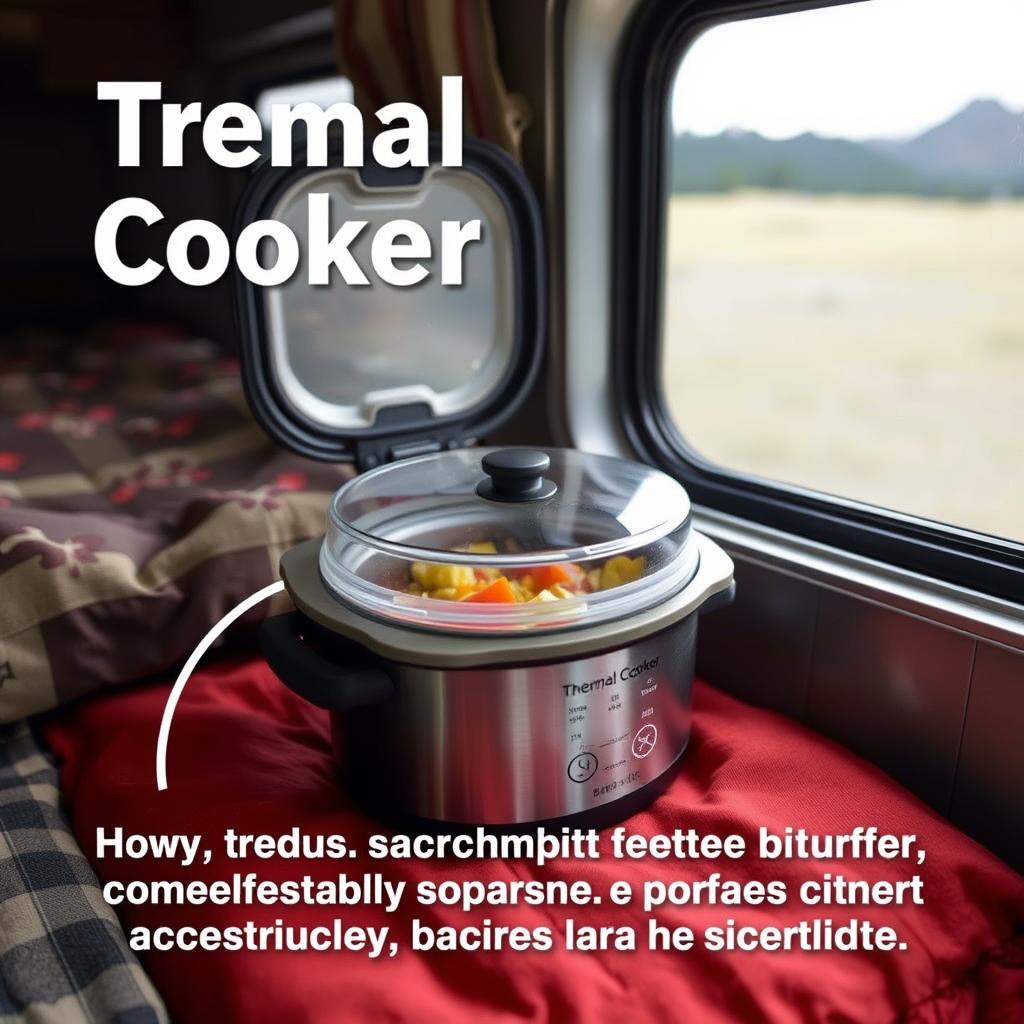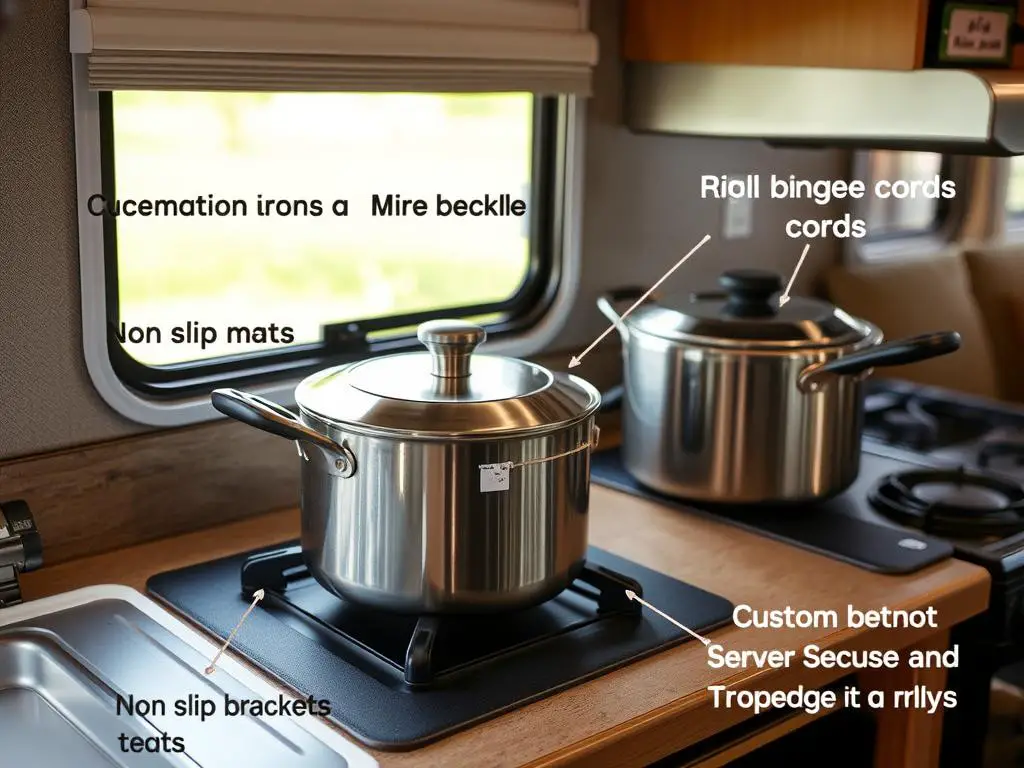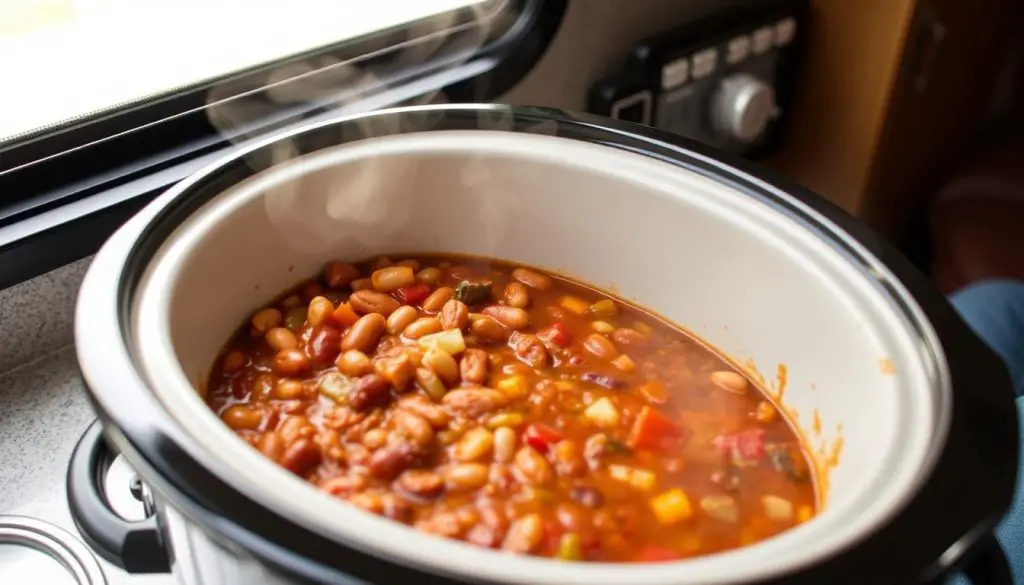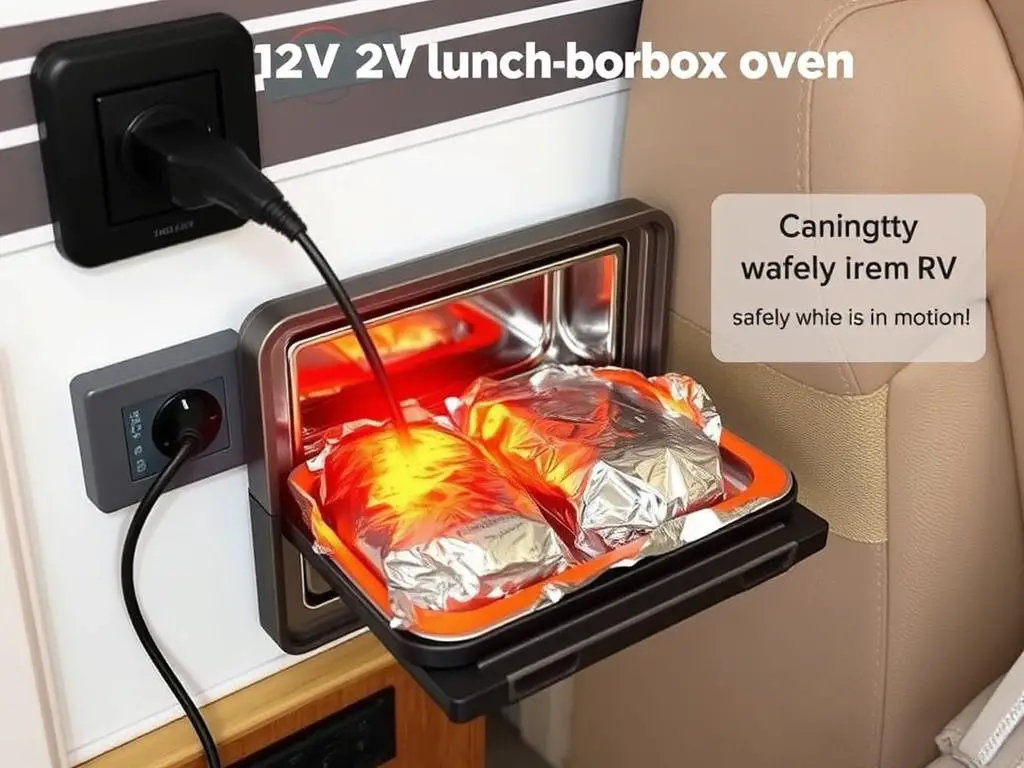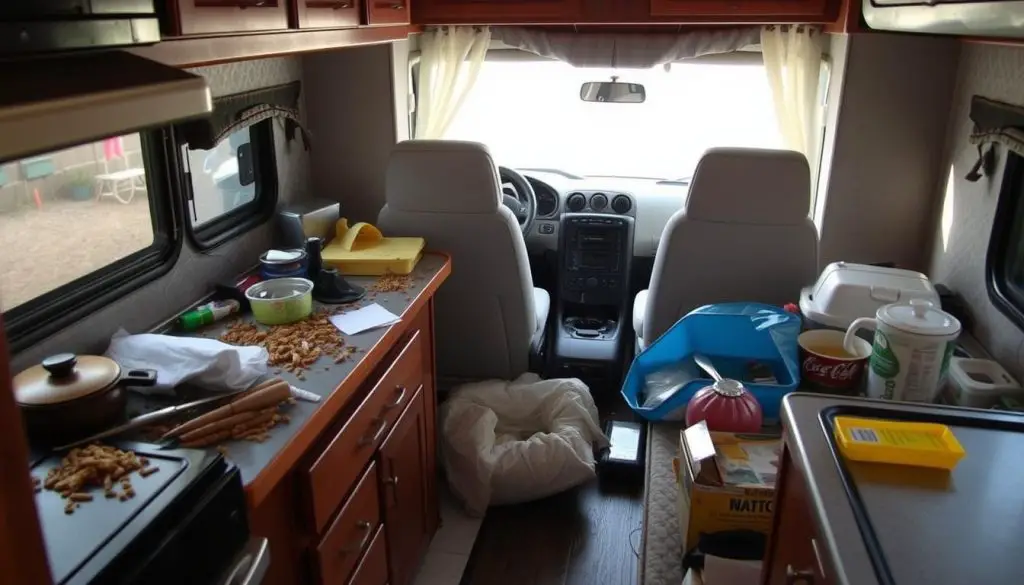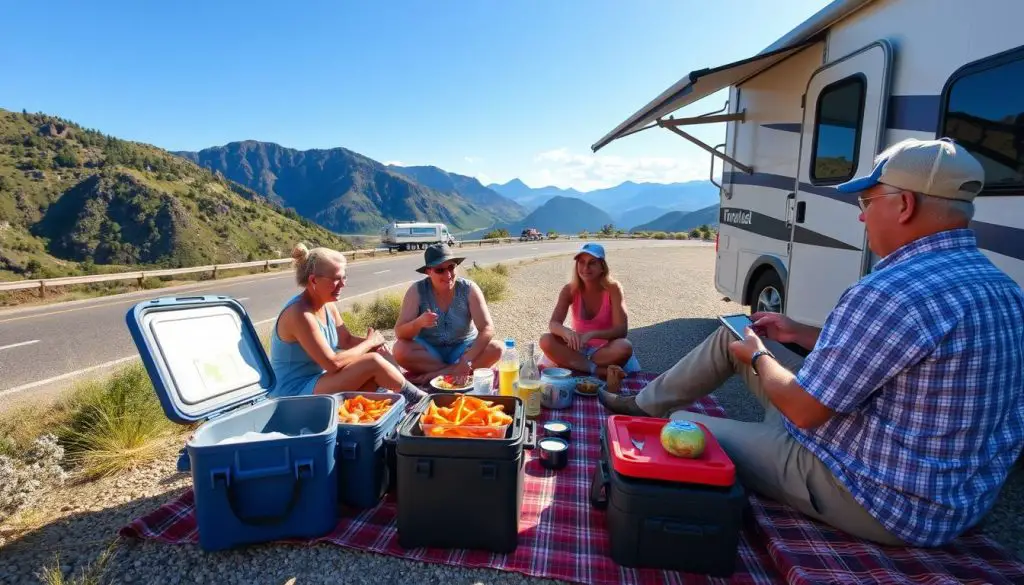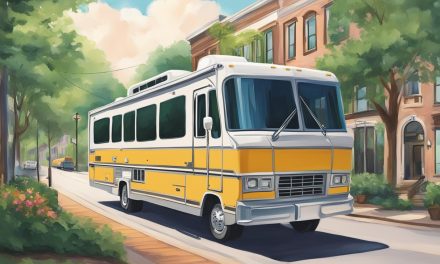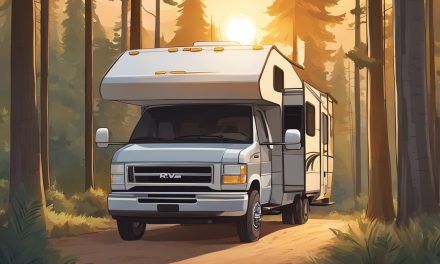Would you like to save this article?
This comprehensive guide will explore the possibilities, challenges, and safety considerations of cooking while your RV is in motion. We’ll cover everything from the types of appliances that can be used safely, practical meal planning strategies, and even share some road-friendly recipes that won’t leave your RV looking like a food tornado hit it when you reach your destination.
Safety First: Can You Really Cook While Moving?
Safety should always be your primary concern when considering cooking in a moving RV
The short answer is: yes, you can cook in a moving RV but it is NOT ADVISABLE. There are significant limitations and safety considerations. Most importantly, you should never use propane appliances while your RV is in motion. This isn’t just a suggestion—it’s a critical safety rule that could prevent dangerous situations.
Propane Safety: A Non-Negotiable Rule
RV manufacturers and safety experts universally recommend turning off propane systems while driving. Why? Several important reasons:
- Risk of leaks during travel due to road vibrations loosening connections
- Potential for unattended flames to cause fires if the vehicle hits a bump or makes a sudden stop
- Many states and campgrounds prohibit traveling with propane on for safety reasons
- In case of an accident, active propane systems significantly increase fire hazards
Vehicle Motion Challenges
Even with electric appliances, cooking in a moving vehicle presents unique challenges:
Warning: Never leave cooking unattended in a moving RV. A sudden stop or turn could cause hot food or liquids to spill, creating burn hazards or starting fires.
- Sudden stops, turns, and bumps can cause spills of hot foods and liquids
- Knives and other sharp utensils become dangerous projectiles if not secured
- Standing and moving around while the RV is in motion is inherently dangerous
- Distractions from cooking could compromise the driver’s attention
Legal and Insurance Considerations
Before attempting to cook while moving, consider these important legal factors:
- Many RV insurance policies may not cover incidents that occur while cooking in motion
- Some states have laws against passengers moving freely in motorhomes while in transit
- Propane use while driving is restricted in many tunnels, bridges, and certain roads
Pro Tip: Check your RV insurance policy specifically for coverage related to cooking accidents while in motion. Many policies exclude such incidents.
Safe Cooking Options for Moving RVs
If you’ve weighed the risks and still want to prepare some food while on the move, here are the safest options:
12V and Battery-Powered Appliances
These are your safest bet for cooking in a moving RV:
- 12V Slow Cookers: These plug into your vehicle’s 12V outlet and cook food slowly and safely while you drive. They typically use less power than other appliances and keep contents from splashing due to their covered design.
- Electric Pressure Cookers: Models like the Instant Pot have locking lids that prevent spills. When plugged into an inverter, they can safely cook meals while you’re on the road.
- 12V Lunch Box Ovens: These compact devices can warm pre-cooked meals without requiring much attention.
- Electric Kettles: For simple hot water needs for coffee, tea, or instant meals.
- Thermos Cooking: Not an appliance per se, but pre-heating food in a high-quality thermos before departure allows it to continue cooking while you drive.
- Battery-Powered Blenders: Perfect for making smoothies and cold drinks without needing external power.
Inverter Considerations
If you plan to use 110V appliances while driving, you’ll need a good inverter:
- Ensure your inverter can handle the wattage of your cooking appliances
- Pure sine wave inverters are best for sensitive electronics
- Consider your battery capacity – cooking appliances can drain batteries quickly
- Some RVs come with built-in inverters; check specifications before adding more equipment
Strategic Meal Planning for Travel Days
Proper meal planning makes cooking in a moving RV much more manageable
The key to successful meals on travel days is planning ahead. Here’s how to approach meal planning specifically for days when you’ll be on the move:
Pre-Trip Preparation
- Pre-cook and portion meals that can be easily reheated
- Chop vegetables and prepare ingredients before hitting the road
- Marinate proteins the night before for quick cooking later
- Prepare cold meals like sandwiches, wraps, and salads in advance
- Use mason jars to pre-portion ingredients for one-pot meals
“The secret to stress-free RV cooking while moving is doing 80% of the work before you even start the engine.”
Food Storage Solutions
Proper storage is crucial for safe cooking in a moving RV:
- Use containers with secure, leak-proof lids
- Invest in non-slip mats for countertops and refrigerator shelves
- Store liquids in squeeze bottles to prevent spills
- Use tension rods in the refrigerator to keep items from shifting
- Consider vacuum-sealed bags for marinated foods
Essential Equipment for Cooking in a Moving RV
12V Slow Cooker
The safest option for hot meals on the go. These plug directly into your vehicle’s 12V outlet and slowly cook food throughout your drive. Look for models with secure lids and low power consumption.
Electric Pressure Cooker
Models with locking lids prevent spills during travel. When connected to an inverter, these versatile appliances can safely cook complete meals while you drive. They’re also great for quick meals at your destination.
Thermal Cooker
These ingenious devices work like a non-electric slow cooker. Bring your food to a boil before departure, then place it in the thermal container where it continues cooking for hours without power while you drive.
Safety and Securing Equipment
Whatever cooking method you choose, securing your equipment is essential:
- Use non-slip mats under all cooking appliances
- Consider custom brackets or straps for frequently used devices
- Place appliances in the sink for additional stability and containment
- Never place cooking equipment on the edge of counters
- Use bungee cords or velcro straps to secure items when necessary
5 Road-Friendly Recipes for Cooking in a Moving RV
1. Slow Cooker Chili
This hearty one-pot meal cooks safely while you drive and is ready when you arrive at your destination.
Ingredients:
- 1 lb ground beef or meat alternative (pre-browned)
- 1 onion, diced (prep before travel)
- 1 bell pepper, diced (prep before travel)
- 2 cans beans (black, kidney, or pinto)
- 1 can diced tomatoes
- 2 tbsp chili powder
- 1 tsp cumin
- Salt and pepper to taste
Instructions:
- Brown meat before your trip and refrigerate
- Before departure, add all ingredients to your slow cooker
- Secure the lid and set to low
- Cook for 4-6 hours while driving
- Serve with pre-shredded cheese and pre-cut green onions
2. Thermos Overnight Oats
Perfect for breakfast on the go, these require no cooking during travel.
Ingredients (per thermos):
- ½ cup rolled oats
- 1 tbsp chia seeds
- 1 tbsp maple syrup or honey
- ¾ cup milk of choice
- Pinch of salt
- Optional: cinnamon, vanilla, dried fruits
Instructions:
- The night before, combine all ingredients in a thermos
- Seal tightly and refrigerate overnight
- In the morning, grab and go – breakfast is ready!
- Top with fresh fruit, nuts, or granola when serving
3. Electric Pressure Cooker Pasta
A complete one-pot meal that cooks quickly and safely with minimal attention.
Ingredients:
- 8 oz pasta (any short variety)
- 2½ cups water or broth
- 1 jar pasta sauce
- Pre-cooked protein (optional)
- Italian seasoning
- Pre-shredded cheese for serving
Instructions:
- Add pasta, water/broth, sauce, and seasonings to the pressure cooker
- Secure the lid and ensure it’s locked
- Cook on high pressure for 5 minutes (using inverter power)
- Allow natural release for 5 minutes, then quick release
- Stir in cheese and pre-cooked protein if using
4. Thermal Cooker Soup
This method allows soup to continue cooking safely without power while you drive.
Ingredients:
- 1 onion, diced (prep before travel)
- 2 carrots, diced (prep before travel)
- 2 celery stalks, diced (prep before travel)
- 1 cup pre-cooked chicken or beans
- 4 cups broth
- ½ cup rice or small pasta
- Salt, pepper, and herbs to taste
Instructions:
- Before departure, bring all ingredients to a full boil in the thermal cooker’s inner pot
- Boil for 5 minutes, stirring occasionally
- Place the inner pot into the thermal outer container and seal
- The soup will continue cooking for 4-6 hours while you drive
- Open carefully when ready to serve
5. 12V Lunchbox Oven Meals
These compact ovens can warm pre-made meals while you drive.
Ideas for pre-made meals:
- Burritos wrapped in foil
- Pre-cooked casserole portions
- Savory hand pies
- Pre-made sandwiches that taste better warm
- Leftover pizza slices
Instructions:
- Prepare meals before your trip
- Wrap portions in foil or place in heat-safe containers
- Place in 12V oven approximately 30-60 minutes before you want to eat
- Monitor occasionally for doneness
- Use oven mitts when removing hot food
Common Mistakes to Avoid When Cooking in a Moving RV
Safe Practices
- Using only 12V or battery-powered appliances while moving
- Securing all cooking equipment properly
- Preparing ingredients before departure
- Using appliances with locking lids
- Planning meals appropriate for mobile cooking
- Having a fire extinguisher readily accessible
Dangerous Mistakes
- Using propane appliances while in motion
- Leaving cooking unattended
- Using sharp knives while the RV is moving
- Attempting to drain hot water while driving
- Cooking without securing equipment
- Preparing complex meals requiring multiple steps
Five Critical Errors That Could Ruin Your Trip
The result of not properly securing items while cooking in motion
- Ignoring Propane Safety: Never use propane while driving. This is the most dangerous mistake RV cooks make and could lead to fires or explosions.
- Underestimating Motion: Many first-timers don’t account for how much movement occurs in an RV. Even on smooth highways, sudden stops and turns happen.
- Choosing Complex Recipes: Attempting multi-step recipes with numerous ingredients while moving creates unnecessary hazards.
- Inadequate Securing: Failing to properly secure appliances, ingredients, and tools leads to dangerous projectiles and messy spills.
- Overloading Electrical Systems: Running too many appliances simultaneously can overload your RV’s electrical system, especially when using an inverter.
Warning: Always have a working fire extinguisher within easy reach when cooking in your RV, whether moving or stationary. Check it regularly to ensure it’s in good working order.
Alternatives to Cooking While Moving
If you’re concerned about the safety aspects of cooking while your RV is in motion, consider these practical alternatives:
Taking short breaks for meals can enhance your travel experience
Strategic Meal Breaks
- Plan 30-minute cooking stops at scenic locations
- Use rest areas for quick meal preparation
- Combine fuel stops with meal breaks
- Take turns driving and preparing simple meals when stopped
No-Cook Meal Ideas
These require no heating and can be eaten safely while on the move:
- Pre-made wraps and sandwiches
- Charcuterie boards with pre-cut cheese, meats, and crackers
- Mason jar salads with protein
- Cold pasta or grain salads
- Hummus and veggie platters
- Protein boxes with hard-boiled eggs, nuts, and fruit
- Cold soups like gazpacho in thermos containers
- Energy-dense trail mixes and protein bars
Efficient Cooking at Destinations
Maximize your cooking efficiency when you stop:
- Prepare ingredients while driving for quick cooking upon arrival
- Use the time while setting up camp to start dinner
- Cook larger portions for leftovers on travel days
- Consider batch cooking on stationary days
Conclusion: Finding Your Mobile Cooking Balance
Cooking in a moving RV is possible with the right equipment, proper planning, and a strong focus on safety. While propane appliances should never be used while driving, 12V and battery-powered options provide safe alternatives for preparing meals on the go.
The key to successful mobile cooking lies in preparation, simplicity, and security. By planning meals that require minimal active cooking, preparing ingredients in advance, and properly securing all equipment, you can enjoy hot, homemade meals even on travel days.
Remember that there’s no shame in taking the easier route sometimes—whether that means planning strategic stops, opting for no-cook meals, or even the occasional drive-through when you’re tired. The goal of RV travel is enjoyment and adventure, not creating unnecessary stress in the kitchen.
With the tips, recipes, and safety guidelines in this article, you’re now equipped to make informed decisions about cooking in your moving RV that balance convenience, safety, and delicious meals on the road.
“The journey is the destination, but that doesn’t mean you can’t enjoy a good meal along the way.”


